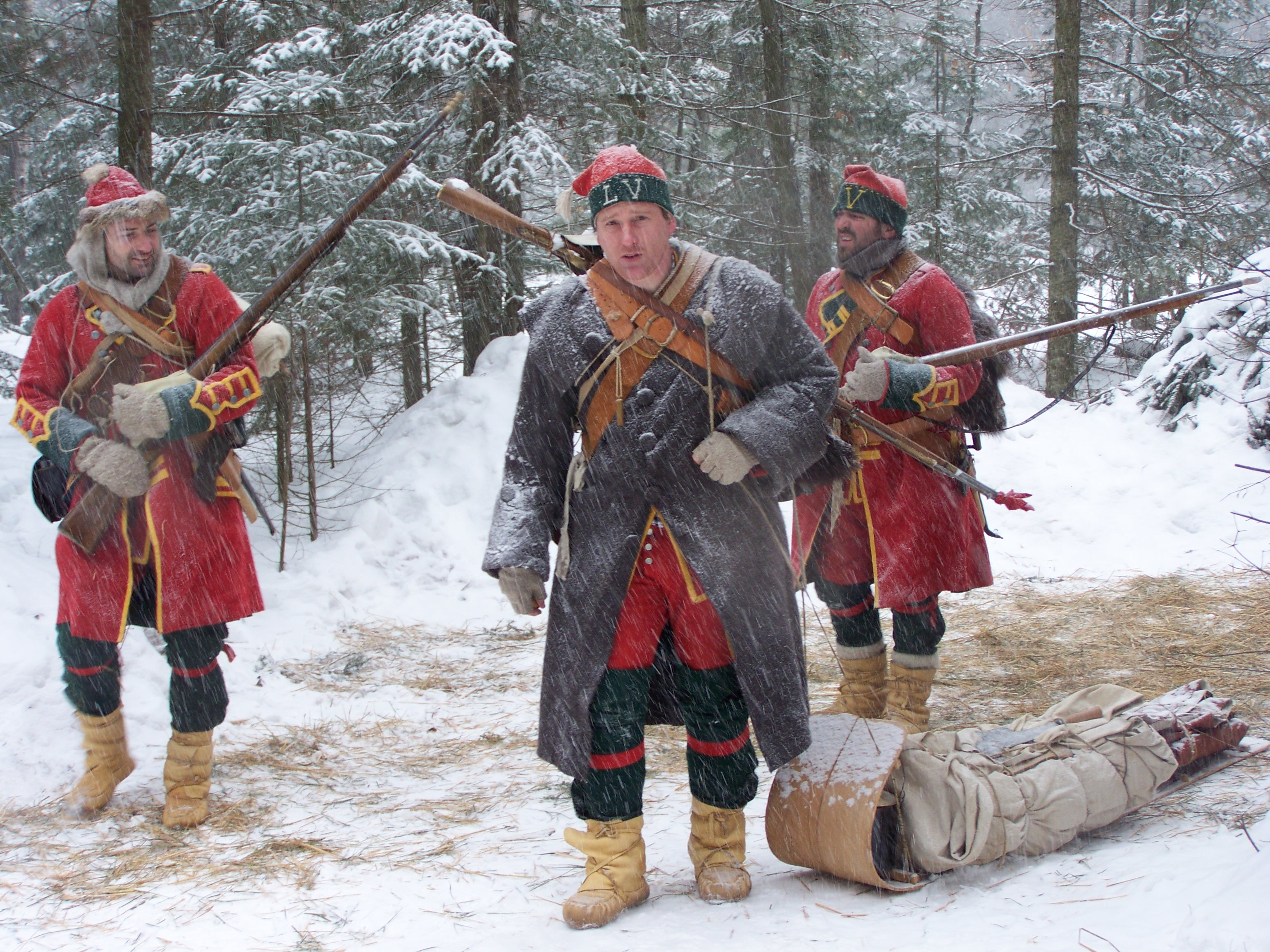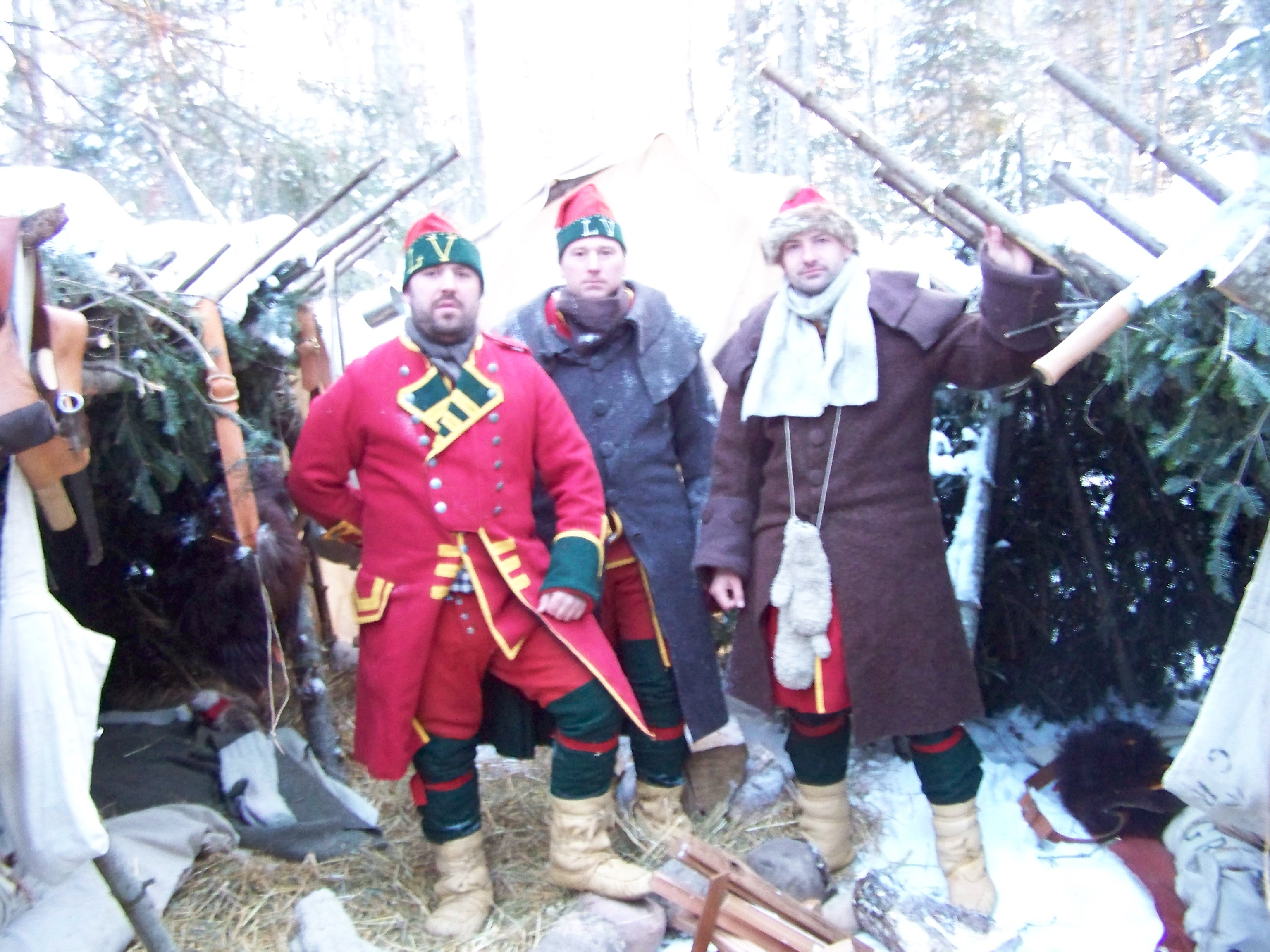Winter Campaigning.

One of the activities members enjoy the challenge of is going out upon a winter scout. Winter campaigning was not for the faint of heart, “The frost is so intense, that many of our soldiers have had their noses, ears, and fingers nipped, or frost-bitten…” wrote John Knox in his journal.1 We continuously research the clothing and equipment that was used during the winters of North America, to gain insight into how the soldier of the 18th century coped with the frigid temperatures. Journals and letters provide clues as to how these men operated under harsh conditions. Utilizing our research and skills gleaned from outdoors training and books, we got out upon scouts during the winter season, and enjoy nature when many stay indoors.

Soldiers typically used snowshoes for easier movement upon the snow. At times ice skates were even used by troops on winter scouts; “I [Major Robert Rogers] sent Lieutenant Phillips with fifteen men, as an advanced guard, some of whom went before him on scates….”2 Ice creepers were yet another means of making travel on ice easier, and prevent serious falls on the ice.3 Equipment and extra provisions, as well as sick or injured men were often toted on toboggans or hand sleighs.

Encamping detachments in the winter was done by a couple different methods. Lord Loudoun described one of the ways detachments could encamp, in a plan for a winter attack on Fort Ticonderoga. “As soon as you take up your Ground, they make Bush Tents of Pine Boughs, two opposite to each other, leaving a Space between them in which they make great Fires, and the men in each of the Tents lie with their Feet to the Fires in which Situation they are tolerably comfortable.”4 John Knox recorded how a detachment in Nova Scotia spent a night out in the winter; “We made beds of spruce tops, laid in a circular form, with a fire in the center, and shaded round the windward side with larger branches: thus we lay after the manner of the Indians.”5 Making beds of branches and leaves wasn’t uncommon, Capt. Jeduthan Baldwin on a scout near Lake George in March of 1756 wrote; “Lodgd not on feather beds but on hemlock boughs.”6 Anne Grant wrote in her memoirs when describing a hunting party of British troops that set out from Fort Ontario in the month of February. She wrote; they were “provided with a competent supply of bear-skins, blankets, &c. to make their projected wigwams comfortable.”7 Presumably these wigwams were actually lean-to shelters like the ones described by Lord Loudoun.
1 Knox, John. An Historical Journal of the Campaigns in North America For the Years 1757, 1758, 1759,
and 1760. Vol. I. Greenwood Press. New York 1968. P. 291-292.
2 Rogers, Robert. The Journals of Major Robert Rogers. Dresslar Publishing, Bargarsville,
3 Knox. P. 132.
Pargellis, Stanley. Military Affairs In North America 1748-1765, Selected Documents From The
Cumberland Papers In Windsor Castle. Archon Books, 1969. P. 401.
4 Pargellis, Stanley. P. 401
5 Knox. P. 121.
6 Todish, Timothy (ed.). Annotated and Illustrated Journals of Major Robert Rogers. Purple Mountain Press, NY
2002. P.43.
7 Grant, Anne. Memoirs of an American Lady Vol. II. Research Reprints Inc.